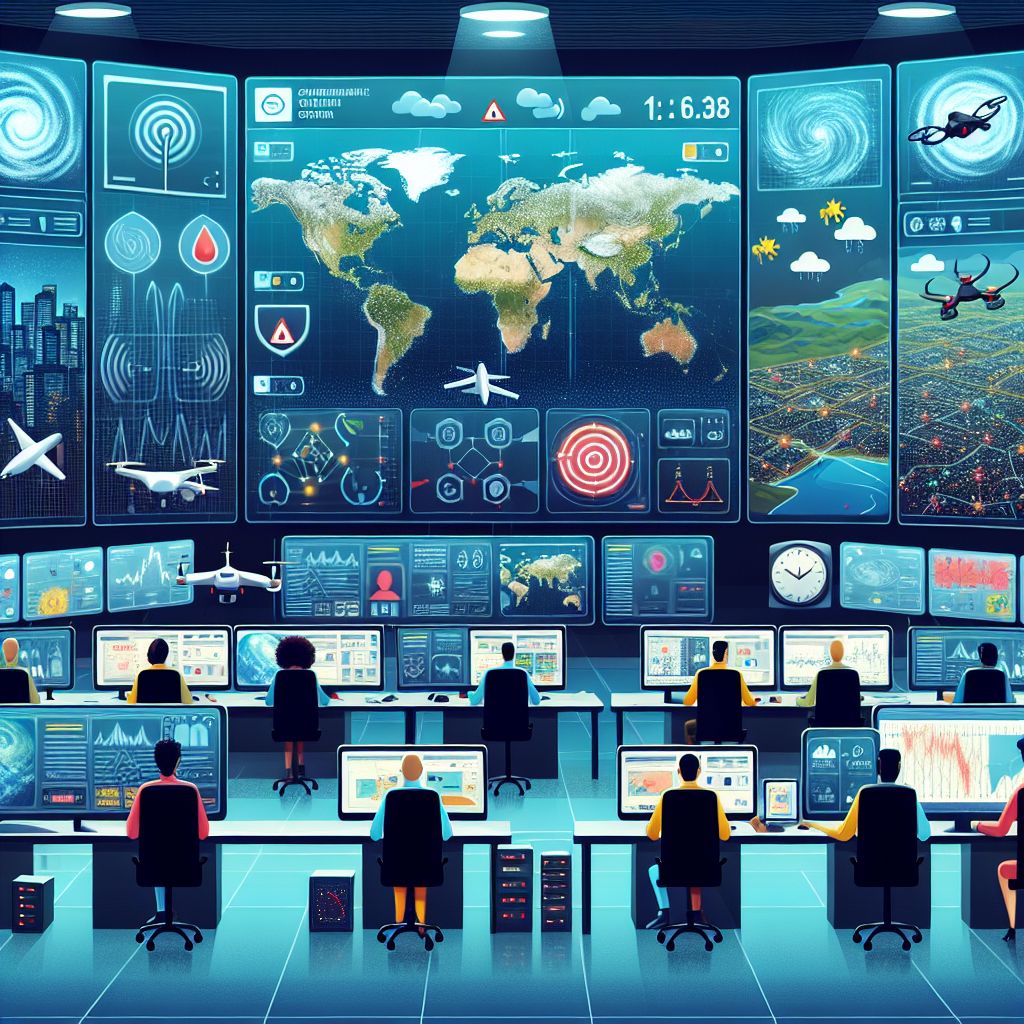Introduction to IoT in Disaster Response
In recent years, the integration of Internet of Things (IoT) technology has revolutionized how we approach disaster response and emergency management. This sophisticated network of interconnected devices and sensors has become instrumental in creating more efficient, responsive, and intelligent disaster management systems. As natural and man-made disasters continue to increase in frequency and intensity, the role of IoT in modernizing disaster response systems has become more crucial than ever.
Understanding IoT Infrastructure in Disaster Management
IoT infrastructure in disaster management comprises various components working seamlessly together to create a comprehensive response system. These elements include:
- Smart Sensors: Deployed across vulnerable areas to monitor environmental conditions
- Data Collection Devices: Gathering real-time information about disaster situations
- Communication Networks: Enabling rapid data transmission between devices and command centers
- Analytics Platforms: Processing collected data to generate actionable insights
- Emergency Response Systems: Coordinating rescue operations and resource allocation
Key Applications of IoT in Disaster Response
Early Warning Systems
IoT-enabled early warning systems have transformed how we predict and prepare for natural disasters. These systems utilize:
- Advanced weather sensors for meteorological data collection
- Seismic activity monitors for earthquake prediction
- Water level sensors for flood warning
- Environmental monitors for detecting chemical hazards
Real-time Monitoring and Surveillance
During disaster events, IoT devices provide crucial real-time monitoring capabilities through:
- Drone surveillance for aerial assessment
- Smart cameras for ground-level monitoring
- Wearable devices for tracking emergency responders
- Environmental sensors for monitoring air quality and radiation levels
Enhanced Communication and Coordination
IoT technology has significantly improved communication and coordination during disaster response operations by:
- Establishing reliable emergency communication networks
- Enabling real-time information sharing between agencies
- Facilitating seamless coordination of rescue operations
- Supporting decision-making through data analytics
Resource Management and Optimization
Smart resource management through IoT helps in:
- Tracking and allocating emergency supplies
- Managing medical resources and personnel
- Optimizing evacuation routes
- Monitoring infrastructure damage and repairs
Data Analytics and Predictive Modeling
IoT systems generate vast amounts of data that can be used for:
- Predictive analysis of disaster patterns
- Risk assessment and vulnerability mapping
- Resource requirement forecasting
- Post-disaster recovery planning
Challenges and Future Developments
Current Challenges
Despite its benefits, IoT implementation in disaster response faces several challenges:
- Infrastructure reliability during disasters
- Data security and privacy concerns
- Integration with existing systems
- Cost of implementation and maintenance
Future Developments
The future of IoT in disaster response looks promising with emerging technologies such as:
- 5G integration for faster data transmission
- Artificial Intelligence for improved decision-making
- Blockchain for secure data management
- Advanced robotics for search and rescue operations
Best Practices for Implementation
To maximize the effectiveness of IoT in disaster response, organizations should:
- Develop comprehensive implementation strategies
- Ensure regular system maintenance and updates
- Provide adequate training for personnel
- Establish clear protocols for data management
- Create backup systems for redundancy
Impact on Community Resilience
The implementation of IoT in disaster response systems has significantly improved community resilience through:
- Better preparedness for disasters
- Faster response times
- Improved resource allocation
- Enhanced community awareness
- More effective recovery processes
Conclusion
The role of IoT in modernizing disaster response systems continues to evolve and expand, offering increasingly sophisticated solutions for emergency management. As technology advances and becomes more integrated into disaster response frameworks, we can expect to see even more innovative applications that will further enhance our ability to predict, respond to, and recover from disasters. The key to success lies in continued investment in IoT infrastructure, addressing current challenges, and maintaining a forward-thinking approach to emergency management.
Future Outlook
Looking ahead, the integration of IoT in disaster response systems will likely become even more sophisticated, with increased focus on:
- Advanced sensor technologies
- Improved data analytics capabilities
- Enhanced automation in response systems
- Greater integration with smart city infrastructure
- More robust communication networks
As we continue to face increasingly complex environmental and man-made disasters, the role of IoT in emergency management will become increasingly vital, helping to save lives and protect communities through advanced technology and innovation.

